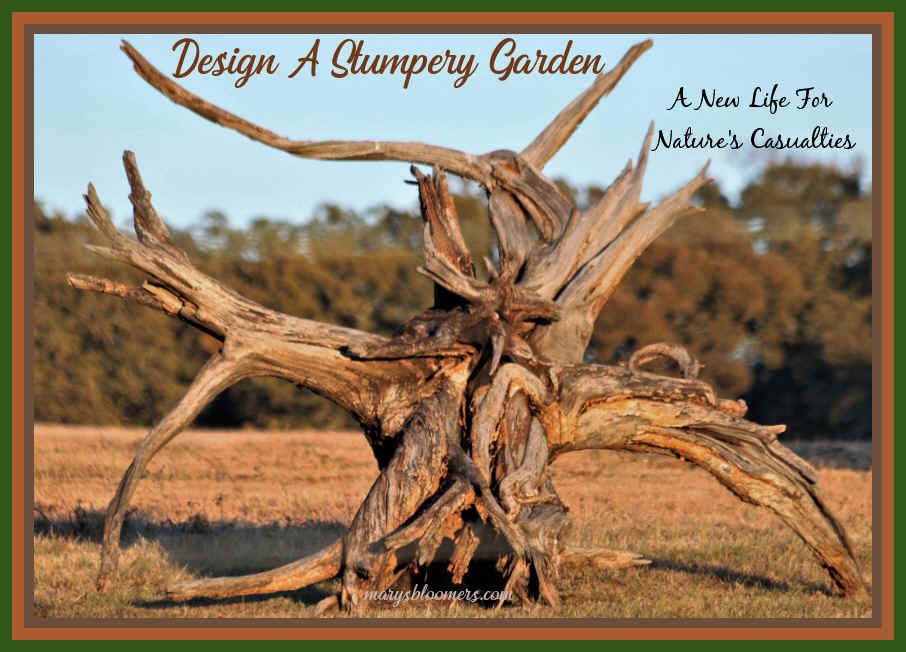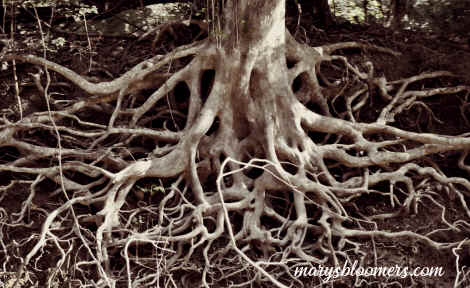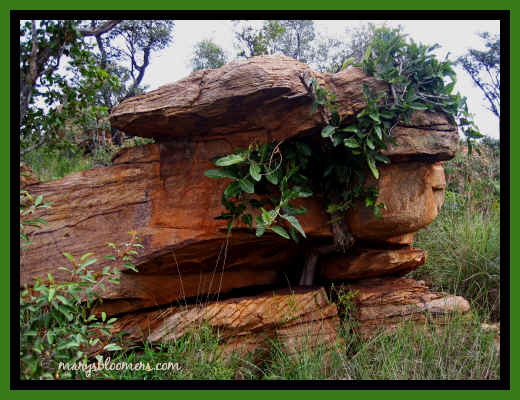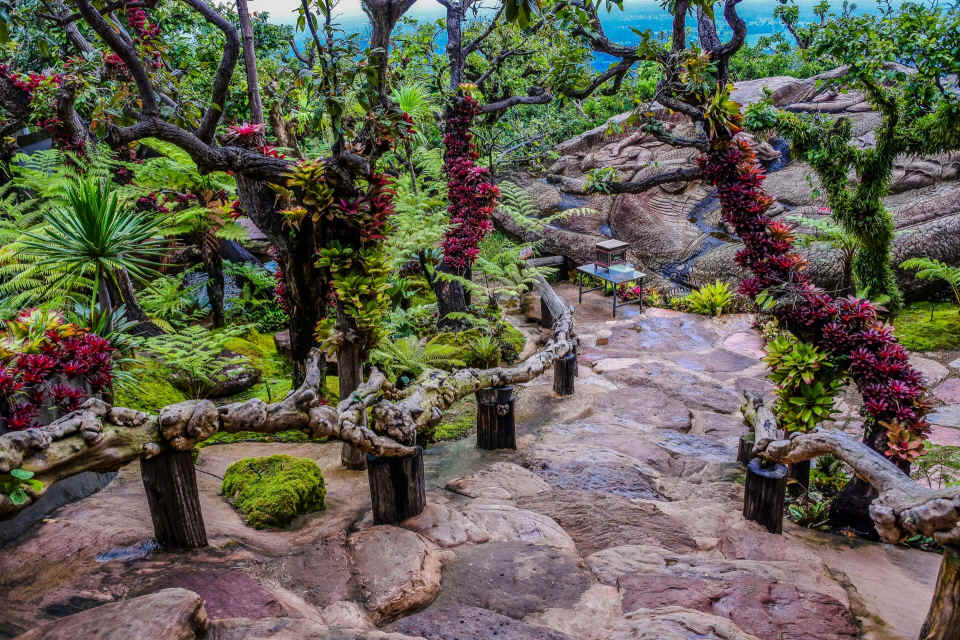|
|
||||||||||
|
A stumpery is a garden feature made from parts of dead trees. This can take the form of whole stumps, logs, pieces of bark or even worked timber such as railway sleepers or floorboards. The pieces are arranged artistically, and plants, typically ferns, mosses and lichens are encouraged to grow around or on them. They provide a feature for the garden and a habitat for several types of wildlife. The first formal stumpery garden was built in 1856 and they remained popular in Victorian Britain. Stumperies have been described as "Victorian horticultural oddities" and were popular features of 19th-century gardens. The reasons for their popularity vary but it may be a result of the Romantic Movement which emphasised the beauty of nature. Their popularity may also be attributed to the increasing popularity of ferns as garden plants and ferneries designed at the time. Ferns were very fashionable, and hundreds of new species were introduced to Britain from around the world. The stumpery made an ideal habitat for these shade-loving plants. Stumperies may have also been used in place of rockeries in areas where suitable rocks were in short supply. Their popularity is once again on the rise.
Large
Stumpery Gardens look amazingly like natural sculpture galleries. Big is
Best. But small will do for urban gardens or particular themes. Upcycling
Nature's casualties gives new purpose, and a place to thrive for many
plants, birds and animals. Starting a shade or
rain garden with lacy ferns and ornamental
foliage plants adds to your contribution to the ecosystem, the textures
and dimensions of your garden themes, and looks beautiful as surprise
garden spots.
I've used lots of discarded natural wood to decorate my gardens....washed up driftwood, dried cholla cactus branches, eautiful chunks of petrified wood from Nevada that was gifted to me, and small logs from doomed trees, cut down by the city. The more unusual, the better. Wood un-preserved, undiseasd, and covered in lichen, mosses and such are perfect for my design needs. It gives the garden a more natural feel. Much like mini forests would look. My previous property had natural elements just being blown down by storms, or dropping from old growth. I treated myself to lots of big bonfires with extra stuff I would have had to clean out. I had it made, in terms of materials. But I now have an urban garden, so i depend on grabbing cut-down branches, and driftwood provided by my fisherman friends. I bemoan the hurried decision when i moved to leave behind an awesome base of a tree covered in dead roots that had a "Medusa" effect. That one could have been the centerpiece of a xeriscape or bird habitat.
Stumperies work best in shady or
damp areas, where mosses or ferns grow naturally, or are designed to do
so. Many tropical and foliage plants love the atmosphere. This garden
theme delivers a mini-forest feel, and it's easy to do. If you have no
shade, a few branches and small logs can be used to outline a planting,
edge beds, and be arranged in sunny gardens. I do it for my cactus and
succulent gardens. I use dried cholla cactus branches, driftwoods and
Manzanita tree branches for interest - cholla branches are decorated
with holes all along the branch in a pattern, Manzanita are thin, smooth
and graceful.
Obviously, Stumpery Gardening can be practiced in many garden situations, except for very formal gardens. And obviously, non-purists can find many branch and tree types made for aquariums that are not organic. Resin branches are available. But for our purposes, we'll say use the natural branches mostly, and add a few resin, if you wish to get shapes you want. After all, my gardens contain a few knockout and weatherproof silk flowers filling in gaps that appear in my floral gardens. I don't frown upon non-organic design. You do not, however, want to create a Dead Tree Garden - you want this concept as a garden feature in a broader theme.
The secret is not to use the trees as just statuary, but fill nooks and crannies with soil and plants that enjoy shallow planting and are easy-care. These are also great for growing and training vines, or to partially cover, as in a forest setting. I've planted moss over some chunks that had lichen already on them. Depending on where you place the pieces, stuff will grow naturally on them, as they would in a wooded area. Small beds in a larger garden make pretty stumperies. You don't have to go big. And you don't have to make it a focus. Below is a photo of
my raised garden cactus theme utilizing stumpery. Any size, and most
garden themes, can be a home for tree limbs and dead roots |
 |
The first stumpery to be built, at Biddulph Grange, Staffordshire, in 1856, was designed by the artist and gardener Edward William Cooke for the estate's owner. The stumpery at Biddulph Grange consists of stumps placed into a 10-foot wall on either side of a garden path, and used as a scaffold for the growth of ferns. A famous modern stumpery is that at Highgrove House, Gloucestershire, the home of Prince Charles, which is considered to be the largest stumpery in Britain. The Prince built the stumpery from sweet chestnut roots, held in place by steel bars, when he first purchased the estate in 1980, and it now provides a home for organically-grown ferns, hellebores and hostas. |
 |
 |
Quick
Links
Article Sources:
My garden landscapes
Wikipedia
Wikimedia
Content,
photos, graphics and design ©2021 marysbloomers.com
All rights reserved
This
site uses Watermarkly Software












